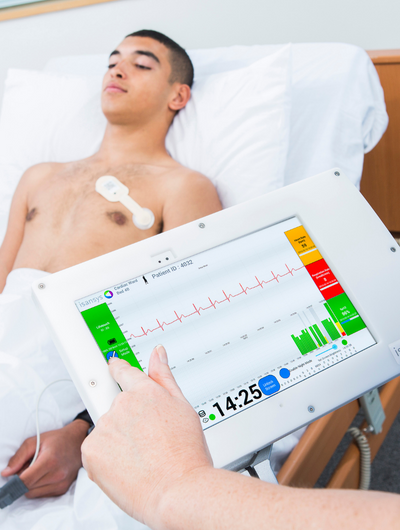Innovation
The Patient Status Engine (PSE), continuous, wireless vital sign data acquisition and analysis platform delivered as a managed service to hospitals and other providers.
Competition
Competition 5 - Patient Safety & Patient Monitoring
Clinical need
Vital signs observation is a very complex area and a key part of the ‘chain of prevention’ to avoid deterioration, cardiac arrest and death. Except for those staying in intensive care wards however, not all patients are adequately monitored.
Even high dependency patients may fail to receive the necessary intensive monitoring due to a range of factors including lack of suitable beds and nursing resource. Patients in general wards are monitored at long (up to 8 hourly) intervals during which time the patient’s status could change significantly. Such infrequent monitoring makes it difficult to identify trends which act as early indicators of a potential decline in the patient’s condition.

Patient perspective
The PSE provides the means for automatic vital sign data capture and delivers real time Early Warning Scores (EWS) for any, or all, patients cost effectively and at large scale. This means clinicians are able to spot signs of deterioration (or improvement) more quickly and are able to use this information to support intervention before patients suffer adverse events.
“We’re using wearable wireless technology to identify and predict deterioration in children earlier, so that we can avoid life-threatening events. The ability to track and identify deterioration towards a cardiac arrest will give doctors the chance to save the patient’s life.”
Dr Heather Duncan, lead for the RAPID project at the Birmingham Children’s Hospital, where the PSE has been installed.
"The PSE has allowed me to cuddle her, lift her and care for her in the way I want to. It’s given me peace of mind and a sense of normality."
Mother of newborn daughter being monitored with the PSE at Birmingham Children’s Hospital

